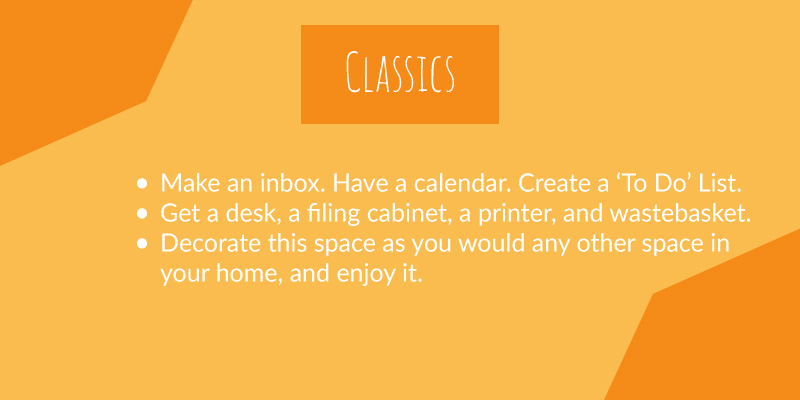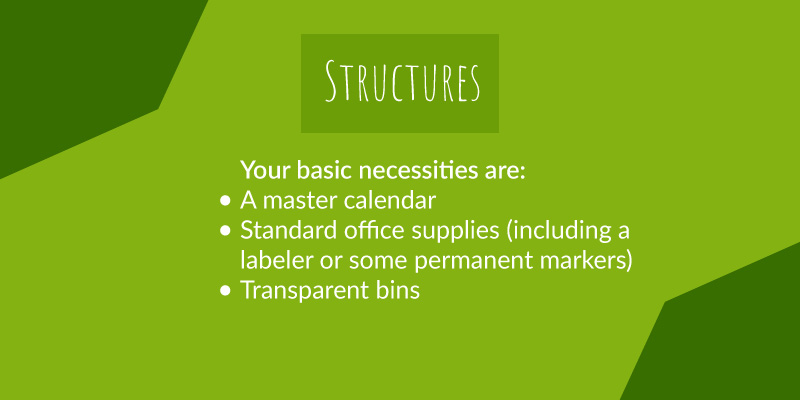Working from Home: Turning Home Office Chaos into Clarity
Nowhere will you see a greater and more vivid difference in organizational style than in the home office. If you’ve read our book (and our previous blog posts), you’ll already have an idea of what this particular posting will be about: How to make your Home Office space work for you, whether labeling is your passion or filing cabinets are just a graveyard for your personal paperwork. In this post, we’ll go over some brief, all-around good habits you can form around working within this space. We’ll also touch briefly on at least one tool each type can employ for a more organized and useful office space.
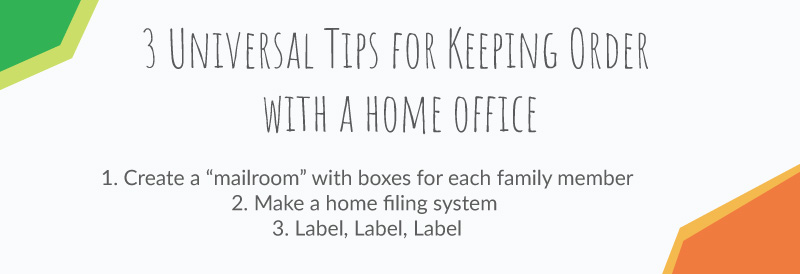
Essential and Universal Tips for Keeping Order
Let’s start with the three most important things for any Pixie Type to do when re-creating the Home Office Space:
- Create a “mailroom” with boxes for each family member
Married with three kids? Make an ‘inbox’ with five slots, and label each of them with the person’s name. All mail, school papers, permission slips and reports can go in these. Have a husband and a dog? Your bills, his bills, and the vet bills — all go into the appropriate slot. Yes, you can make a slot for the dog. After all, he or she is a member of the family, too!
- Make a home filing system to organize papers you’ve already seen but may need to keep.
If this option fills you with horror, don’t despair. The system doesn’t need to be fancy or official. It just needs to be functional. Buy a filing cabinet or filing system and label the folders or slots according to how best you’ll retrieve something. In other words, Classics might work best with a traditional filing cabinet with labels for folders, etc. But Freedoms will probably work better with open and translucent bins (preferably labeled) where they can pile things according to the way they will remember and see them best.
- Label, Label, Label
We hate to say this, but you’ve got to label no matter what your Pixie Type is. Even if it’s labeling a bin ‘miscellaneous’, we believe that this tool is not only essential to creating some semblance of order in the home office, it sparks retrieval, which is one of the major Pixie Principles (for a reason). As our book states, “the more categories that are labeled, the less likely you are to start a new pile on the kitchen table.”
Another perk of our book is that it gives you access to little tips on organizing each area of your living space. The tip that we give for this area is around storing receipts. Those pesky things can end up at the bottom of your 3rd most favorite purse or crumpled down inside the pocket of the car door. Get a big ziploc bag, put it somewhere on your home office desk, and put your receipts in there. Start with the ones you already have. Look in your wallet, purse, etc. From that point on, bring them home and put them in the ziploc. You can go through them at the end of each month, three months, whatever. As long as they all end up in a place you can eventually sort through, that’s what matters.

The Rest of the General Rules for a Home Office:
- Keep only what you might need again in the future, like tax receipts (keep for 7 years only) and bills (keep up to 1 year)
- Keep a shredder next to your desk space or wherever you would normally purge old papers
- Explain the organization system to the rest of the household: This is a biggie. If the system you put in place isn’t used properly, it will fall apart.
- A note about the tax receipts: If you want to keep them forever (or longer than 7 years), put them in a big box and store them in the attic.
Now we are going to get a tad specific, and lay out one or two “home office rules” to live by for each type.
Home Office Tips for Classics
Let’s face it. Home office organization was made for Classic types. We will make this short and sweet:
- Make an inbox. Have a calendar. Create a ‘To Do’ List.
- Get a desk, a filing cabinet, a printer, and wastebasket.
- Decorate this space as you would any other space in your home, and enjoy it.
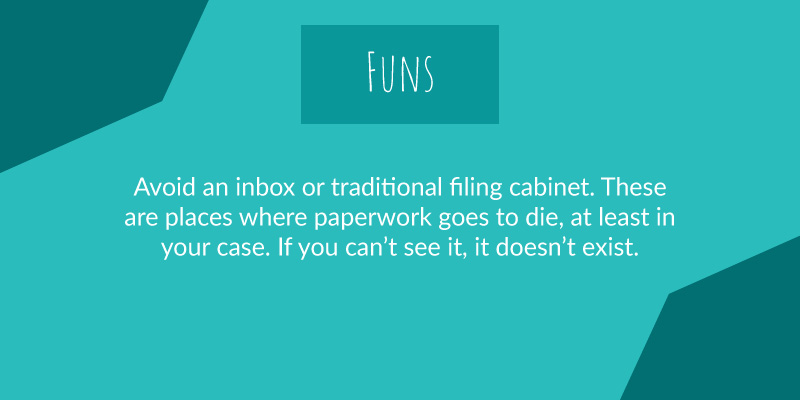
Home Office Tips for Funs
Because your organizational strength is dealing with things in the present moment and as they come up, follow these rules when creating a home office space:
- Avoid an inbox or traditional filing cabinet. These are places where paperwork goes to die, at least in your case. If you can’t see it, it doesn’t exist.
- Instead, use an accordion file that you can take places with you and file in the moment (or a few minutes after), like doctor’s waiting rooms, or on the train to work.
Home Office Tips for Structures
Your type needs a less traditional setup. Make sure you can pile neatly; use transparent bins for this purpose. Your basic necessities are:
- A master calendar
- Standard office supplies (including a labeler or some permanent markers)
- Transparent bins
Label the bins and make your piles within each bin. That way, you can still make piles that make sense to you, but within the structure of retrieval, which will make things that much easier to find. Labeling these bins and having them in plain sight will also ensure that others don’t move anything around or mess with them.
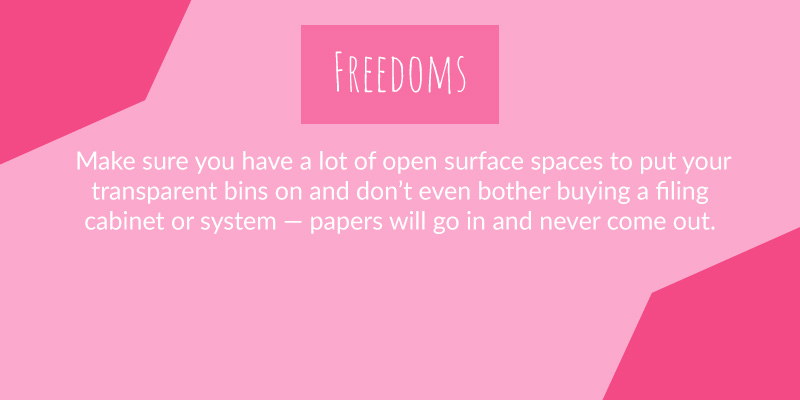
Home Office Tips for Freedoms
Now this might sound odd, but our advice for you is to NOT re-create an office environment for your home. Make sure you have a lot of open surface spaces to put your transparent bins on and don’t even bother buying a filing cabinet or system — papers will go in and never come out.
If the term ‘home office’ makes you nauseous with its dull and boring nature, bring some fun into the project with new organizing materials, brightly colored pens, and the like.
Last Words
We know that dealing with the minutiae can be bad enough at work, but this is your home! Have some fun with the prospect — and most importantly, do it in a way that works best for YOU.

